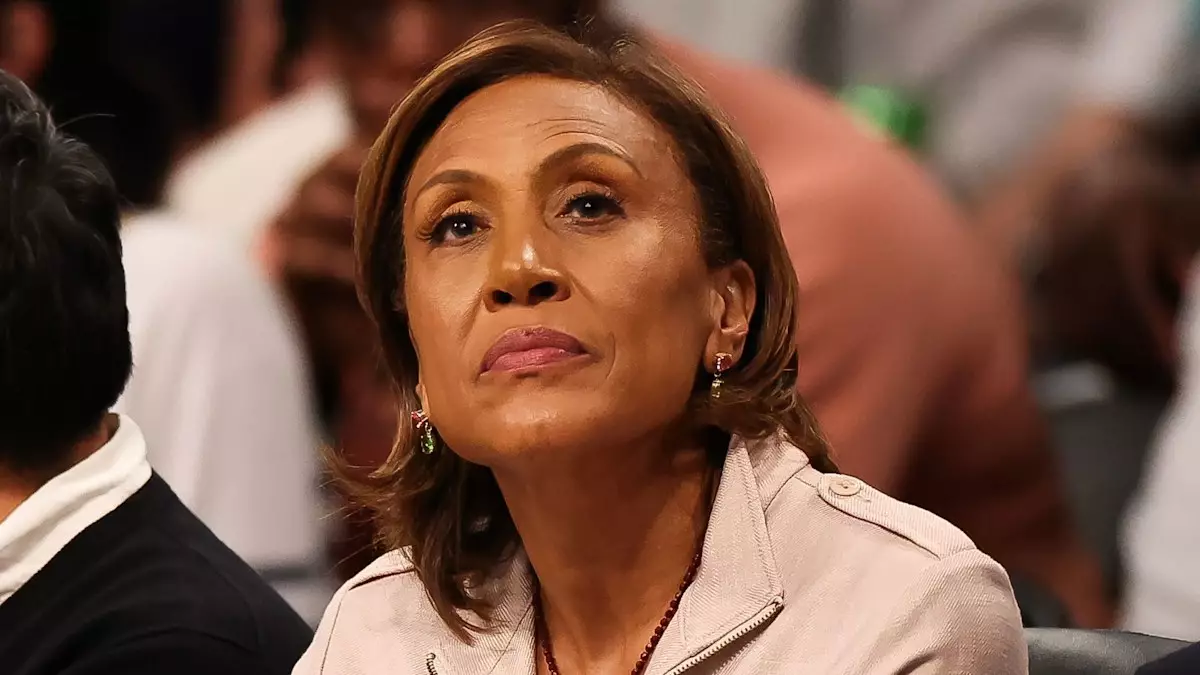In an emotionally charged episode of Good Morning America, celebrated anchor Robin Roberts revisited a pivotal moment in her life: her return to the show following a life-saving stem cell transplant. The segment not only emblemized her personal struggle but also served as a platform to raise awareness about bone marrow donation, catalyzing a movement to encourage potential donors across the nation. Diagnosed with myelodysplastic syndrome (MDS) in 2012, a rare blood disorder impacting bone marrow, Robin took a leave of absence from the show for a trying 174 days. The challenging journey culminated in a successful transplant from her sister, Sally-Ann Roberts, which marked the start of a new chapter not only for Robin but also for countless others inspired by her story.
Robin’s return to Good Morning America on February 20, 2013, marked a triumphant comeback. As her co-anchor George Stephanopoulos thoughtfully pointed out during the live broadcast, Robin’s emotional journey resonates beyond the confines of a television studio; it embodies the strength of community. The emotional coverage felt more like a family reunion than a typical news segment as co-hosts Michael Strahan, Lara Spencer, and Sam Champion reflected on how fortunate they were to have Robin among them. Their camaraderie was palpable, illustrating that the bonds formed between colleagues often transcend professional boundaries.
The episode was enriched by archival footage capturing Robin’s first moments back on air post-transplant. This powerful visual retrospective reminded viewers not only of how far she has come but also of the daunting challenges faced by many individuals fighting blood disorders. By showcasing the experiences of real donors, including her own nephew Jeremiah Craft, the segment provided an opportunity for heartfelt storytelling, drawing viewers into not just Robin’s narrative, but those of everyday heroes who bravely stepped forward to donate.
Since Robin began actively sharing her experiences and encouraging others to become bone marrow donors, remarkable strides have been made. Samantha Champion highlighted a staggering statistic: 155 individuals have donated, while over 37,000 people have joined the donor registry. Moreover, more than $2 million has been raised to support this critical cause. These figures speak volumes to the impact one person’s voice can have in advocating for a much-needed change in society.
Additionally, audiences were introduced to stories like that of Katrice Randolph, a young woman whose journey as a donor began during her college years when she stumbled upon an NMDP table. Nearly a decade later, she received the call asking her to help a young girl named Kelsey, bringing full circle the journey of giving and receiving. Katrice’s narration and her emotional reunion with Kelsey onstage served to captivate viewers while showcasing the profound effects of her altruism.
A Symbol of Hope
Throughout the broadcast, Robin expressed her mixed feelings about reflecting on her past. Although she conveyed gratitude for her recovery and the opportunity to inspire others, she also acknowledged the challenges that came with revisiting painful memories. “It’s still very hard,” she shared, highlighting the emotional toll that often accompanies such life-altering experiences. However, Robin has embraced her role as a “walking, breathing symbol” of resilience, encouraging others through her own narrative of perseverance. She frequently reminds everyone that moments of darkness can lead to brighter tomorrows, and her platform helps amplify this message far and wide.
The recent Good Morning America segment featuring Robin Roberts serves as a poignant reminder of the media’s profound influence in shaping public awareness around critical health issues. More than just a return story, it is a testament to the power of perseverance, community engagement, and activism. As Robin continues her journey, she represents hope for many affected by blood disorders and inspires potential donors to take action. Her story illustrates that while personal struggles may feel isolating, they have the power to unite communities and drive meaningful change when shared openly.

